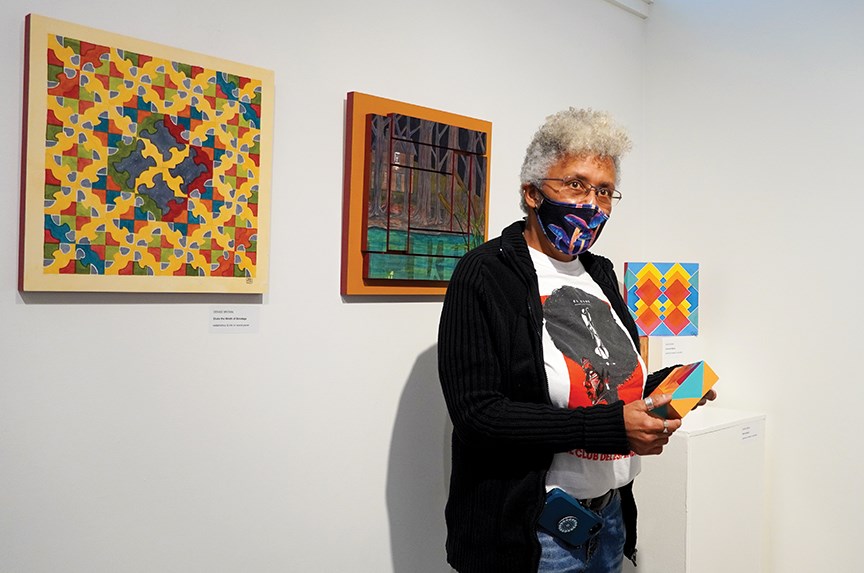A poignant exhibition of paintings at Gibsons Public Art Gallery (GPAG) throughout February – Black History Month – touches on a little-known nugget of history leading up to the American Civil War in the 1860s.
According to oral accounts passed down since that time, coded messages sewn into quilts helped many of the 100,000 Black captives escape to freedom in the northern U.S. and Canada along a network of routes and safe-houses known as the Underground Railroad, beginning in the late 1700s. The folklore about quilts and other secret signals has been largely validated in a historical text published in 2000, Hidden in Plain View, by Jacqueline L. Tobin and Raymond G. Dobard.
For this exhibition, The Fabric of Freedom, mounted in a new viewing space in GPAG’s boardroom, Sunshine Coast artist Denise Brown has created a series of 19 watercolour paintings, many depicting coded quilt patterns.
“There would be a cloth quilt up on a fence. Bounty hunters or plantation owners looking for escapees could see it, too, but it only meant something to people who were on the run,” Brown said in an interview.
A code of symbols was a necessity for a population not allowed to have any formal education, said Brown. “It was unlawful for them to read or write. So, they couldn’t carry a map. They couldn’t have notes in their pocket to say, ‘this is what you do next.’ The idea behind the freedom quilt is that people that were planning to run would memorize what each symbol meant,” she said.
In the painting titled Underground Railroad Legend, Brown has provided a key to the codes, including African symbols many enslaved people would have learned as children. The legend tells us, for instance, that a common quilt square called Log Cabin indicated that the nearby house was safe. A square called Drunkard’s Path advised escapees to take a zigzag route to evade bounty hunters and their hounds. One called Bow Tie signalled a point in their journey that escapees needed to change into clothes like those worn by free people.
Other paintings in the exhibition, although cast in warm, bright colours, are of night scenes in thick woods. “This show was really hard to paint, really emotional,” said Brown, the child of a Black mother and Caucasian father. “I imagined myself a slave on the run: ‘I’ve never been off my plantation. And here I am in the forest, surrounded by all these trees. I can’t go back, the only choice is to go ahead.’ I really did try to put myself in their shoes.”
On Sunday, Feb. 21, from 4 p.m. to 6 p.m., the Black History Month Collective will host an interactive celebration online (via Zoom), including a virtual tour of The Fabric of Freedom exhibit. There also will be poetry performances by Adelene da Soul Poet and Queenie. Tickets are free but pre-registration is required via email at [email protected].



